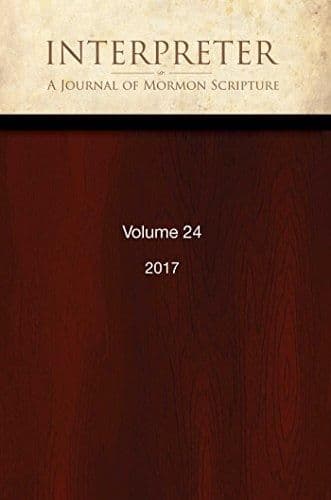Journal
"O Ye Fair Ones" - Revisited

Title
"O Ye Fair Ones" - Revisited
Publication Type
Journal Article
Year of Publication
2016
Authors
Bowen, Matthew L. (Primary)
Journal
Interpreter: A Journal of Latter-day Saint Faith and Scholarship
Pagination
315-344
Volume
20
Abstract
The best explanation for the name “Nephi” is that it derives from the Egyptian word nfr, “good,” “goodly,” “fine,” “fair,” “beautiful.” Nephi’s autobiographical wordplay on his own name in his self-introduction (and elsewhere throughout his writings) revolves around the evident meaning of his name. This has important implications for how the derived gentilic term “Nephites” was understood over time, especially among the Nephites themselves. Nephi’s early ethno-cultural descriptions of his people describe them as “fair” and “beautiful” (vis-à-vis the Lamanites). These early descriptions subsequently become the basis for Nephite ethno-cultural self-perceptions. The Nephites’ supposition that they were the “good” or “fair ones” was all too frequently at odds with reality, especially when Nephite “chosenness” was understood as inherent or innate. In the end the “good” or “fair ones” fell (Mormon 6:17‒20), because they came to “delight in everything save that which is good” (Moroni 9:19). The Book of Mormon thus constitutes a warning against our own contemporary cultural and religious tendency toward exceptionalism. Mormon and Moroni, like Nephi their ancestor through his writings on the small plates, endeavor through their own writing and editorial work to show how the “unbelieving” descendants of the Nephites and Lamanites can again become the “good” and the “fair ones” by choosing to come unto Christ, partaking of his “goodness,” and doing the “good” stipulated by the doctrine of Christ.
Subject Keywords
Bibliographic Citation
Terms of use
Items in the BMC Archive are made publicly available for non-commercial, private use. Inclusion within the BMC Archive does not imply endorsement. Items do not represent the official views of The Church of Jesus Christ of Latter-day Saints or of Book of Mormon Central.